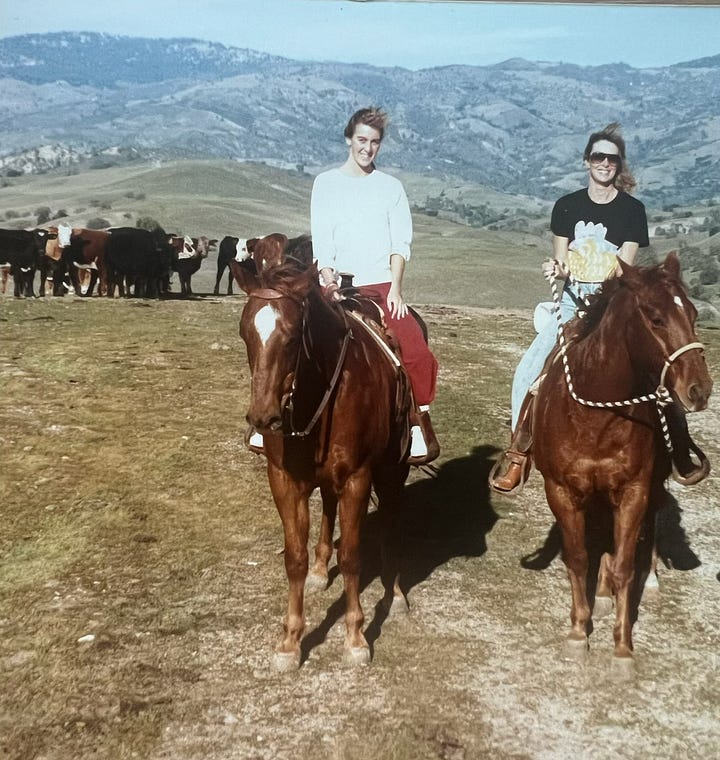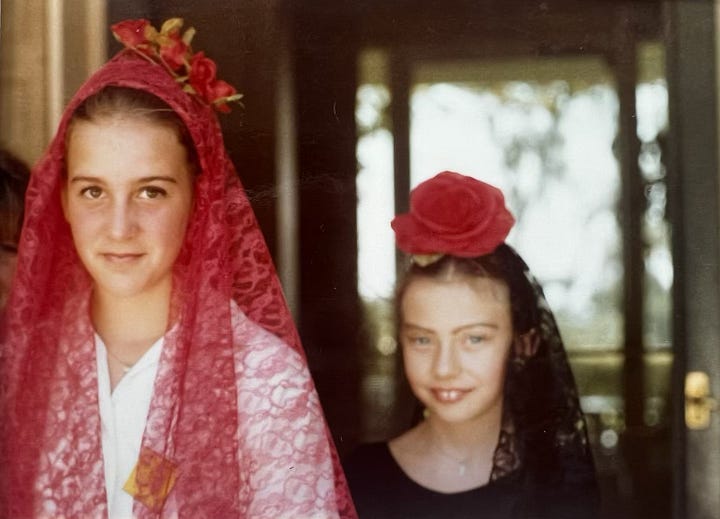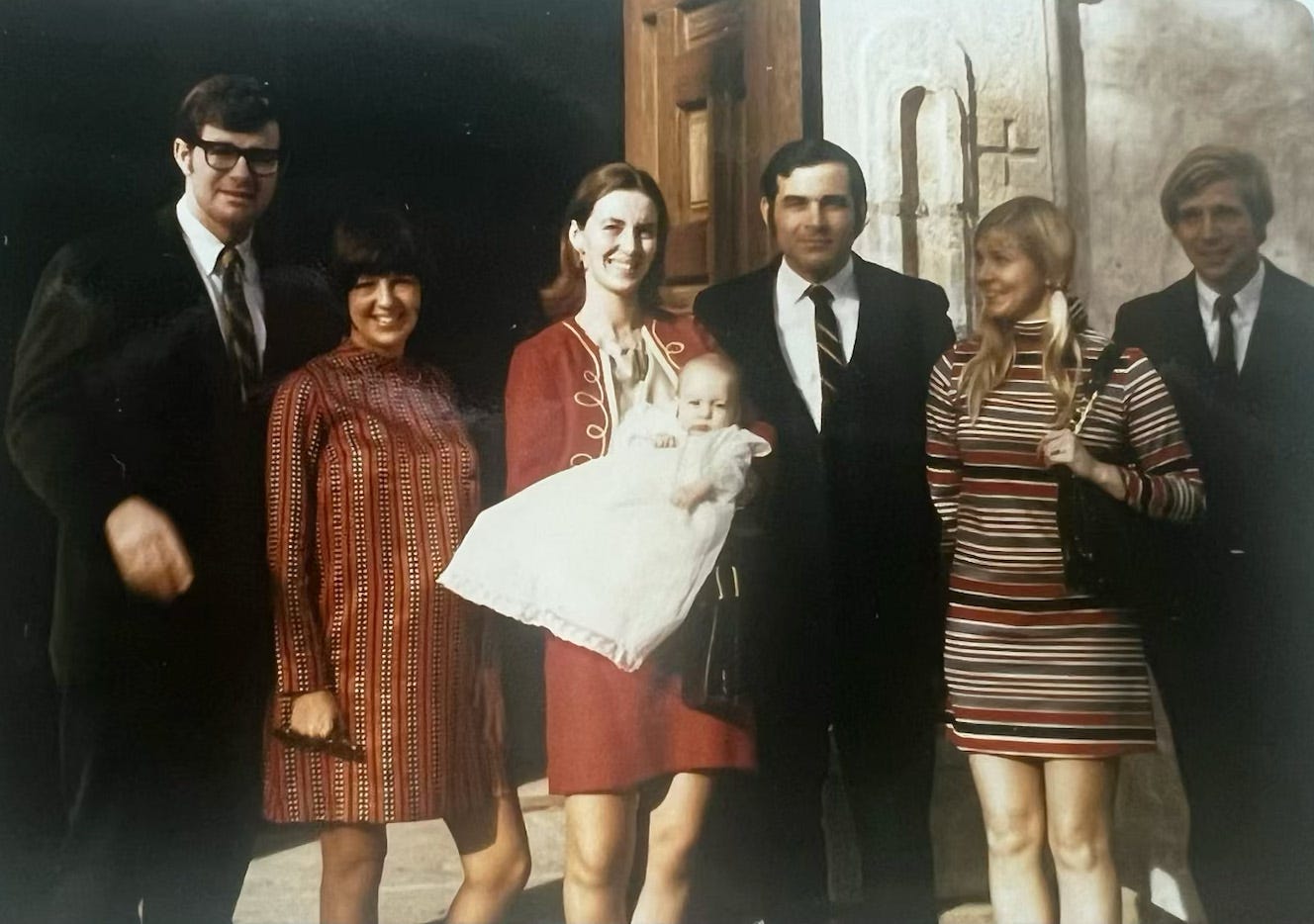Eau de Old Montecito
A perfume of Saddle Cream, Coppertone, Jose Cuervo and orange blossom wrapped in I. Magnin tissue paper

Welcome to our first installment in a new series on Beachtown Bohemia entitled The Old Montecito. In this series, I will do my best to describe the community of Montecito via the memories of those who lived in it prior to the current decade. As I mentioned in my introductory post in this series, I’m not a local historian nor a journalist: what a bring to this exploration is a certain curiosity about where I live, and a desire to document a Montecito culture that I perceive as shifting from one cultural identity into another. I seek to capture in these interviews how Montecito used to feel. A storied, glamorous place like Montecito is a lot like an iconic person. It carries with it an aura that is a direct correlation to it’s past. This past is the scent I am after. I’d call this Eau de Old Montecito: Saddle Cream, Coppertone, Jose Cuervo, and orange blossom, nestled in pale pink I. Magnin tissue paper.
In my conversations with native Montecitoans I’ve pressed people about the mundane details of how life used to look and feel in town: the urban morphology of their home turf. Details like how Coast Village Road, until about 2018 used to have a ratty and beloved pizzeria with arcade games called Giovanni’s, that a woman who arrived for dinner at The Bistro at Pierre Lafond would not turn heads in a fur coat, that an heiress would have been more likely to drive an understated, beat-up station wagon than a glossy new coupe, that the old Miramar-by-the-Sea had a lovely gritty Club in the 1980s with a tennis pro and a popular pool, and The Pharmacy Cafe was… exactly the same. These are a few of the tangible, tactile memory assets that native Montecitoans cling to when they recount something ‘as it used to be.’ There are also, however, the intangible signifiers of place — the “social morphology” (a term coined by French Sociologist Emile Durkheim in the late 1800s) of Montecito’s community — how people interacted, which cliques didn’t mix together, how people spoke, and the types of people who moved into town and assimilated into the existing cultural fabric. Montecito’s culture as a town has been evolving — as cities do — from one identity into another for several years now. Someone new to town might be surprised to learn how different the culture here used to be.
When your family ranch predates the San Ysidro Ranch
I first met Leslie Lundgren, one of the aforementioned native Montecitoans, at a trunk show soon after I moved to Montecito. At the time I had a caftan line inspired by my mother’s expat years in Spain, and Leslie was there to shop. We had met earlier, however, on Instagram and had quickly identified each other as kindred California spirits of the same tribe. We are both the progeny of glamorous femme fatale mothers, and found ourselves harboring an ache for what we mutually refer to as “the Old California” - a sort of hiraeth we suffer from. (I have delved a bit into this topic in my piece on Santa Cruz’s Pogonip Club and my godmother chef Sharon Cadwallader and my love letter to the shuttered west department store I. Magnin to whet the palate for where I am headed in this series.) Leslie grew up in Montecito, and is a direct descendant of the family whose citrus ranch property is now, more than a hundred years on, the San Ysidro Ranch. Leslie is a tall, willowly blonde who is half French, and an art historian who worked at auction houses and now has an interior design practice. This sophistication aside, Leslie can also wax poetic about the bliss of the burgers and milkshakes from the original, shabby Miramar by the Sea Club (which closed its doors in the late 1990s) and recount with Proustian detail what it was like to climb into one of the train cars there that comprised a kid-friendly restaurant at the hotel and club in the eighties. Just imagine through a child’s lens how magical to eat your lunch, steps from the sand, inside a train car repurposed as a luncheonette! Or rather, Leslie says, request that your supper be served down at the beach — a Miramar waiter would walk down to the sand and place before you a little table, cover it gingerly with a tablecloth, lay the silverware, and serve you your hot dog and coke. What screams to me from these examples is the cocktail of humility (hot dog) mixed with luxury (table cloth on the sand) and doused in a haze of unstudied nonchalance (repurposed train car.) Yes, it was fancy. But it was also irreverent and casual.


Montecito was Horse Country
Leslie remembers the Montecito of the seventies and eighties was much more of an equestrian hub than it is now. Between the riding that happened in town and the robust polo community just south at the Polo Grounds, a critical mass of horse people made up the population. Leslie remembers as a young girl in the eighties, riding her horse to Pierre Lafond along East Valley Road and tying it up to drink from a trough outside the deli. Her family would frequently ride their horses down San Ysidro Road to Miramar Beach where you could simply walk your horse down the ramp for a beach saunter. (One still occasionally sees horses on Summerland Beach and Loon Point, but rarely (or ever?) on main-thoroughfare of San Ysidro Road.) The horse culture impacted fashion, Leslie explained: Montecito was a place of jeans, old Lacoste shirt, and cowboy boots. Ostentation wasn’t in the fashion vocabulary of the Old Montecito folk. If a mother wasn’t in her riding boots or tennis kit, she might be in a wraparound cotton skirt, izod shirt, and Pappagallo espadrilles. Low-key was the rule, and the celebrities who sequestered in town relished in the anonymity and differentiation from their lives in Hollywood.
Leslie remembers as a young girl in the eighties, riding her horse to Pierre Lafond along East Valley Road and tying it up to drink from a trough outside the deli.


Occasions to be dressy
If a family might be headed out for a dressy night out, or celebrating a graduation or birthday, a woman would be unafraid to wear her fur coat, but she might pair it with candies heels or loafers, Leslie remember. The Biltmore Hotel was a favorite destination for special occasion fine dining, as was The Bistro at Pierre Lafond, next door to the existing Pierre’s deli and Wendy Foster. The Bistro was a white tablecloth classic bistro employing cozy fireplaces and lots of outdoor seating near the creek where a Ceasar salad was tossed theatrically at the table. Leslie describes a more rustic, casual, easy elegance in Montecito in this era. The eateries and the people alike were not striving, gimmicky, or too loudly expensive. Low key was the general rule.
Leslie feels that the San Ysidro Ranch, on her familial land, has retained a lot of it’s old charm and character — this, even despite the devastation of the 2018 Debris Flow catastrophe that damaged much of the hotel property and it’s beloved restaurants. The San Ysidro Ranch used to have horse stables where horseback trail rides were offered to hotel guests. In this way, visiting San Ysidro Ranch for a meal is a lovely window into the architectural tone and visual vocabulary of the Old Montecito.
Shopping in Old Montecito
In terms of shopping, Leslie remembers there were some small locally owned boutiques like Wendy Foster (still iconic and chic and beloved by many grande dames in town), Tweeds and Weeds and Lou Rose but otherwise woman just drove to downtown Santa Barbara to shop where there were actual department stores — a Saks Fifth Avenue and an I. Magnin for makeup, upscale children’s clothes, and high fashion options for special events. Unless it was an occasion, life in Montecito was preppy but ranch casual. Chic 1980s mothers would wear a polo shirt, Dr. Scholls, an a-line skirt, and all other manner of standard beachtown attire. What wasn’t done: a lot of black, designer gear, heaps of jewelry, loudly expensive cars — ostentatiousness was just not part of the culture (yet.)
Real Estate as Collective Cultural Asset
In Notes from a Native Daughter, Joan Didion wrote, “All that is constant about the California of my childhood is the rate at which it disappears.” Leslie Lundgren would agree, and is active in advocating for the preservation of the historic structures in town. In an effort to coalesce her background in architectural history and preservation and her love for Montecito, she has taken a leadership role with The Montecito Association on the History Committee. When I speak with her, it is often in solidarity in regard to a beautiful old home in Montecito — sometimes one that’s 100 years old— at risk of being torn down or stylistically eviscerated by a new resident who seeks to max out a property’s value or usable land or both. Sometimes there is recourse, but often times the house is not historically “of note” and cannot be saved. Leslie believes in the idea of honoring the architectural heritage of our region — nuanced Spanish Colonial porticos, old windows, tile stairways, fabulous full orchards that speak to the lives lived on the property before real estate became solely a financial asset. What seems to be changing is a culture that does not see an old building as a cultural asset. Leslie’s own house endured the historic debris flow of 2018 after the Thomas Fire: she rebuilt with care and a tenderness toward the native plants, scale of the existing neighborhood, and in reference to the ranch-house typology that the house embodied before the catastrophe. What Leslie sees, because she grew up in Montecito, is the idea of real estate not an island unto itself, but as part of the Montecito urban fabric that benefits the whole. Houses that have soul and relate to one another in scale, make for great streets. Even if they are partially concealed behind Montecito’s famous hedges.
Land and Sea, Solace and Sanctuary
Is Joan Didion right, and its just a Californian rite of passage to watch the world you grew up in disappear? I relate quite a bit in terms of the Santa Cruz I marinated in growing up, but I always attributed that to the 1989 earthquake that flattened my downtown. What are constant, it seems, are the elements. There are the mountains. And there is the sea. And betwixt that we can build, destroy, and reinvent cultures, schools, restaurants, houses, roads… but if you’re diving under the waves off Butterfly Beach or hiking the Cold Spring Trail, time stands still. I am grateful for the protections of our coastline, our unbuilt mountains that kiss the clouds. And the rustle of oak trees wiry and noble that cling to our thirsty earth. This landscape is the skin that requires no perfume.







Love this!! Such wonderful times with Leslie ❤️ And I spy both my parents in the wonderful picnic photo!
Very evocative. It was that low key and fabulous simultaneously.
My mother was a woman called Beverley Jackson. We
moved to Montecito when I was four. Going back to my 50th reunion at Laguna Blanca next week.
My mother was pretty well known as she wrote the social column for the News Press for decades. And was one of the more colorful characters in Montecito for 60 plus years.
I’ve blogged a bit about old Montecito.Done a few pieces for Santa Barbara Magazine.
In the 60 plus years my family was there it’s never changed as much as it has since COVID.
You can’t leave out Daphne’s dad’s restaurant Irelands. The center of activity for years. Or Nippers. If you’re going to grab the 70s. And all of us who practically lived at what was then the affordable Coral Casino. The stories are endless as you know.
You might want to check out my mom’s archive at the historical society.